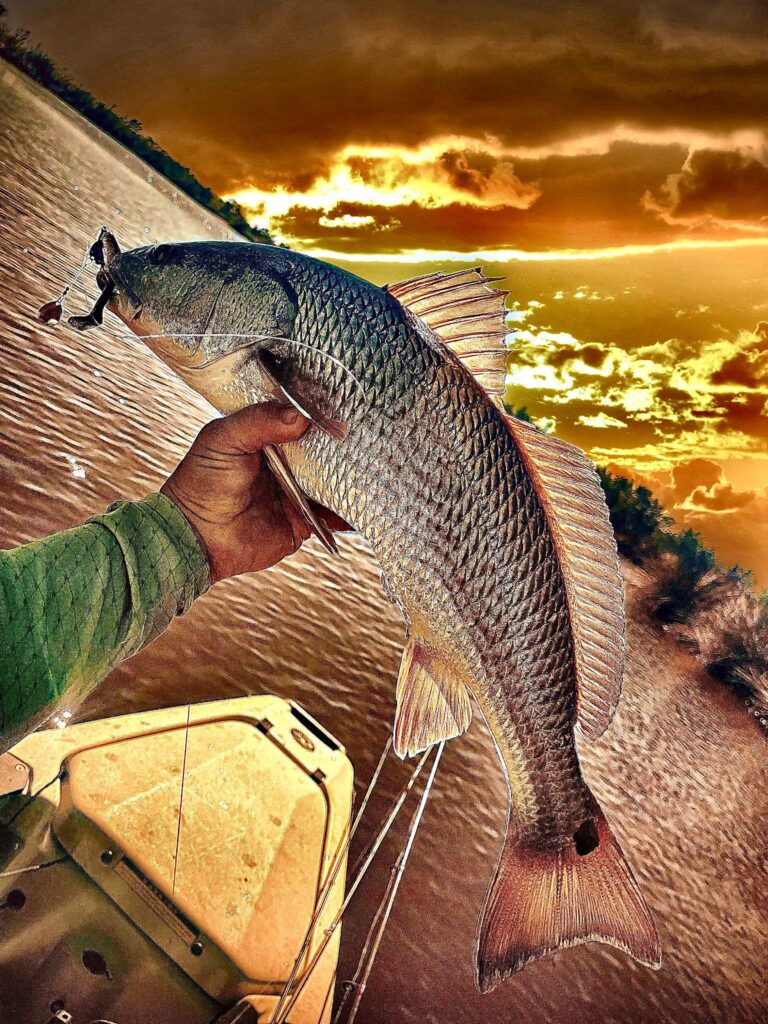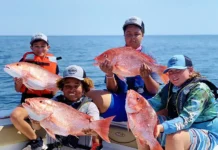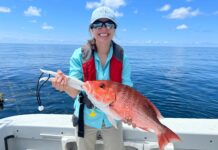Greetings, fellow anglers! Captain Adam Morley here with an exciting fishing report from the South Matanzas River. The fishing season is well underway, and I’m pleased to inform you that the action is heating up! Anglers in the area have been reporting successful catches of Redfish, Trout, Flounder, Tarpon, and Snook. Let’s dive into some tips on how to target each of these species using artificial baits.
- Redfish:
- Redfish are a popular target for anglers due to their strength and willingness to strike at various baits. For targeting Redfish, I recommend using soft plastic baits such as paddle-tail grubs or jerk shads. Opt for natural colors like brown, green, or white to mimic the local baitfish. Rig them on a weedless jig head and work them slowly near grassy flats or oyster bars. Cast your bait near structures or areas with submerged vegetation for the best results.
- Trout:
- Trout are a prized catch in the South Matanzas River, known for their aggressive strikes and acrobatic fights. When targeting Trout, I suggest using artificial baits such as suspending twitchbaits or soft plastic jerk baits. Choose colors like silver, chartreuse, or pearl that imitate small baitfish. Cast your bait along the edges of grassy areas or around sandbars, and use a twitch-and-pause retrieve to entice the Trout to strike.
- Flounder:
- Flounder are bottom-dwelling predators that can be challenging but rewarding to catch. To target Flounder, opt for artificial baits that resemble small baitfish or shrimp. Scented soft plastic baits, such as curly tail grubs or shrimp imitations, work well. Rig them on a jig head with a light sinker to allow the bait to reach the bottom. Cast your bait near sandy drop-offs, channels, or around structure, and use a slow, dragging retrieve to entice Flounder to bite.
- Tarpon:
- Tarpon are mighty game fish known for their powerful runs and acrobatic leaps. When targeting Tarpon, it’s best to use artificial baits that mimic the local forage, such as large swimbaits or soft plastic jerk baits. Opt for natural colors like black, purple, or silver. Cast your bait near bridges, channel edges, or deeper holes. Retrieve your bait with slow, steady movements to imitate injured prey and entice Tarpon to strike.
- Snook:
- Snook are prized for their aggressive strikes and strong fights. For targeting Snook, artificial baits like swimbaits, topwater lures, or soft plastic jerk baits work exceptionally well. Choose colors that imitate local baitfish, such as silver, green, or white. Cast your bait near mangrove shorelines, docks, or areas with current. Vary your retrieve speed to find the optimal presentation that triggers the Snook’s predatory instincts.
Remember, when fishing the South Matanzas River, it’s important to respect local regulations and practice catch-and-release whenever possible. The health and sustainability of the fishery should always be a top priority.
The surf fishing report, covering the recent conditions and catches along the coast. Overall, the conditions have been quite rough, but on the few good days, anglers have been successful in landing Whiting, Redfish, and Black Drum.
The recent weather has presented some challenges for surf fishing enthusiasts, with strong winds and rough surf making it difficult to cast and maintain a stable fishing position. However, on those occasional days when the conditions settle down, anglers have found opportunities to land some impressive catches.
Whiting, also known as Southern Kingfish, have been one of the prominent species being caught. These fish are known for their tasty white flesh and are a popular target among surf anglers. The key to targeting Whiting has been to use fresh shrimp or sand fleas as bait. Rig a two-hook bottom rig with small circle hooks and enough weight to hold your bait in the turbulent surf. Cast out and allow your bait to settle on the sandy bottom, where Whiting are often foraging for food.
In addition to Whiting, anglers have reported successful catches of Redfish and Black Drum. These species are known for their strength and challenging fights, making them highly sought after by surf anglers. To target Redfish and Black Drum, use cut bait such as mullet, crab, or shrimp. Cast your bait out beyond the breaking waves and allow it to sink to the bottom. Patience is key, as these fish tend to be more cautious in rougher conditions. Be prepared for a powerful strike, as both Redfish and Black Drum have the potential to provide thrilling battles.
When planning your surf fishing outings, keep an eye on the weather forecasts for calmer days with lighter winds. These conditions will provide better opportunities for successful surf fishing. It’s also essential to be mindful of local fishing regulations and practice responsible catch-and-release whenever possible, ensuring the sustainability of the fishery.
Remember, surf fishing can be challenging, but with the right timing and techniques, you can still have a rewarding experience. Stay safe, keep an eye on the conditions, and be prepared for the unexpected. Tight lines and happy surf fishing!

Chris from Skinny Water Lures mentioned looking for large tide swings with a full moon appearing during the weekend. Look for an increase in baitfish activity, which will cause more predatory strikes.
One reason why the full moon will affect feeding behavior is that it exerts the strongest pull on the tides. Stronger tidal flow means everything in the water has to exert more energy to live and needs more food.
The days leading up to the full moon and the days after the full moon are often good bite times as fish are using more energy, causing them to be hungrier.
There will also be periods of stronger water movement at high and low tides during these moon phases, usually leading to more fish bites.
During these times, look for an increase in trout and snook bites throughout the night due to the increased full moon illumination.
For Redfish, we recommend focusing on an early morning topwater bite around oyster bars. As the sun rises, switch to a Skinny Water Lure style paddle tail around deep holes on low tide. On high tide, turn your focus to the edges near the banks where Redfish will be using the high water to get into areas not accessible during low tide.
During this full moon phase, look for the bite to slow down as the afternoon approaches. Fish being attracted to the bright lunar light at nighttime will cause them to be more active during the night and less active during the day.













































